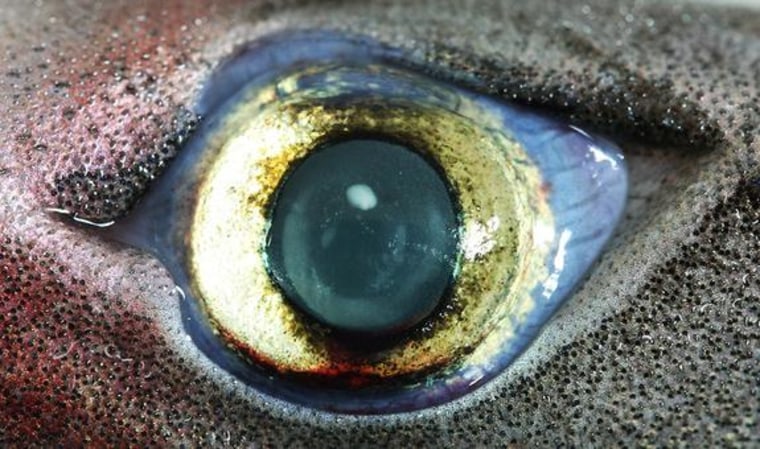In the "twilight zone" of the deep ocean, strange glowing sharks have evolved eyes that are adapted to see complex patterns of light in the dark, new research reveals.
These bioluminescent sharks have a higher density of light-sensitive cells in their retinas, and some species have even developed other visual adaptations that help them see the glimmering lights they use to signal to each other, find prey and camouflage themselves in this region where little light penetrates, according to a study published Wednesday (Aug. 6) in the journal PLOS ONE.
"There are about 50 different shark species that are able to produce light — about 10 percent of all currently known sharks," said study researcher Julien Claes, a biologist at the at The Catholic University of Louvain in Belgium. [ Photos: See the 7 Weirdest Glow-in-the-Dark Creatures ]
The animals live at a depth of about 650 to 3,300 feet (200 to 1,000 meters), a dim region known as the mesopelagic twilight zone, which only weak sunlight can reach.

Claes and his colleagues recently showed that several species of bioluminescent sharks use a very complex mechanism mainly involving hormones, as opposed to the brain signaling chemicals (such as melatonin) used by many glowing bony fishes.
Scientists know that the animals use their own light to camouflage themselves against predators beneath them by blending in with the sunlight from above, Claes told Live Science. He has also found that some species have "light-saber" spines to ward off predators.
In addition to camouflage and protection, the sharks use light to recognize other members of their own species in order to find hunting partners or mates. For example, glowing lantern sharks possess light-producing structures on their sexual organs that help them find each other in the dark, Claes said.
— Tanya Lewis, Live Science
This is a condensed version of a report from Live Science. Read the full report. Follow Tanya Lewis on Twitter and Google+. Follow us @livescience, Facebook & Google+.
More from Live Science: